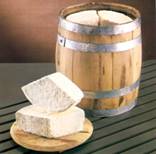The European Court of Justice ended a 13 year dispute in October 2005 when it ruled that the name “feta” must be used only for white cheese soaked in brine and made in Greece. The ruling means that feta cheese now enjoys the same protected status as other foodstuffs like champagne, Parma ham, and Kalamata olives.
The judgment has serious implications for European producers including Germany and Denmark.
 In 1994 Greece asked for feta to be protected under a “PDO” status. The European Commission (EC) granted protection in 1996.
In 1994 Greece asked for feta to be protected under a “PDO” status. The European Commission (EC) granted protection in 1996.
Protected Designation of Origin (PDO) status is an EU instrument introduced in 1992. PDO status offers a country with a unique product the ability to establish its quality within the market and prevent imitation products from competing for sales.
Denmark, Germany and France, with the support of Great Britain, appealed the original decision, arguing that feta was a generic term. In 1999, the European Court of Justice reversed the 1996 decision.
The Greek Ministry of Dairy Products subsequently offered evidence in support of its case. In October 2002, the EC once again concluded that feta cheese was a Greek product, which could only be produced in certain parts of Greece, with specified regulations. Other nations were given five years to change the name of their “feta” cheese, or stop production.
Feta production in Greece can be traced back about 6000 years, with some evidence that it may actually have been created in ancient Crete. Greece produces an estimated 115,000 tonnes of feta annually, according to data provided by the American University, Washington DC. Most of this production is sold within the home market.
The case was finally brought before the European Court of Justice in February 2005, resulting in October’s binding decision. The decision cannot be appealed.
October’s ruling has grim implications for Europe’s non-Greek producers, notably Germany and Denmark. Denmark exports about 25,000 tonnes of feta annually, worth about 75 million euros. Germany exports about 30,000 tonnes.
Since Greece exports relatively little feta cheese, the immediate consequences for Europe’s supermarkets are difficult to assess. Industry experts were not available to comment on developments at the time of writing.
The decision is controversial because feta is not a place in Greece. Parma ham and Kalamata olives enjoy PDO status. Both are produced in recognized geographical regions. However, the Court found that the name “feta” is traditional only in Greece, and that in other member states feta is commonly marketed with labels referring to Greek culture.
Surprisingly, Italy was not one of the EU countries to support the recent appeal attempt, since there is a school of thought claiming feta may not necessarily have its origins in Greece, despite claims that it has been around for some 6,000 years. Certainly it is a new (as opposed to ancient) Greek word stemming from tyripheta (meaning cheese slice) and originally deriving from the Italian word fetta, meaning slice of food.
Although cheeses are mentioned frequently in the writings of the ancient Greeks, it is never clear what kind of cheese they are talking about. The description of cheese making in Homer’s Odyssey (Book 9: 278-79) sounds more like the Sicilian cheeses known as tuma or canestrato than it does a brined cheese like feta. In the anonymous fourteenth-century Venetian cookbook, the Libro per cuoco, there are two recipes that call for formazo di Candia (the ancient name for Crete), a cheese made in the Venetian island of Crete, that may be the first feta cheese. One Candia recipe specifically calls for the cheese to be washed, as you would feta.
In a connected development of the story, The Cheese Producers Association of Crete is demanding the “lifting of the feta production ban” on Crete. “When the petition was filed with the European Union to secure the name “feta” for Greece, Crete – for some unknown reason – was not listed among the areas which traditionally produce this wonderful cheese,” said Kostas Klathos, association president. “This is strange since there are historical sources proving the production of feta in Crete eons ago,” he said.
The arguments may continue about the origin of feta cheese, but, as of now, it is just fodder for some good barroom discussions. All court appeals procedures within the EU have been exhausted, and it’s now official: feta is as Greek (and hopefully, Cretan) as the Parthenon, the Acropolis and . . . Telly Savalas.
By Steve Galloway